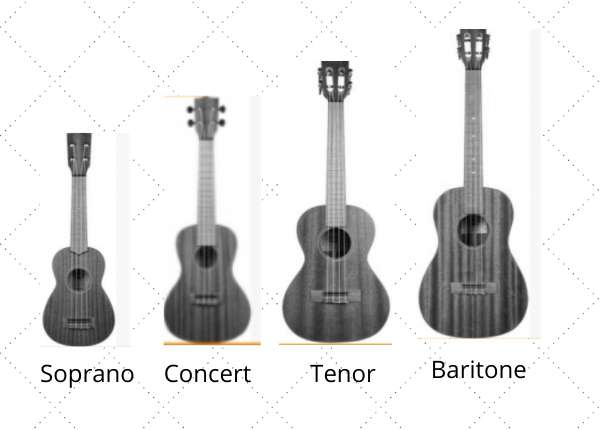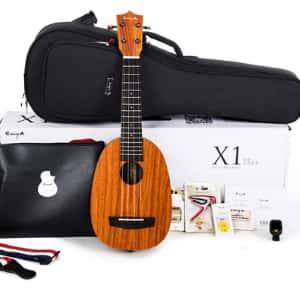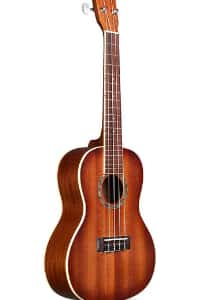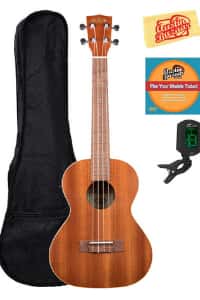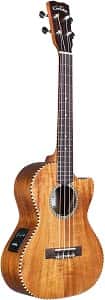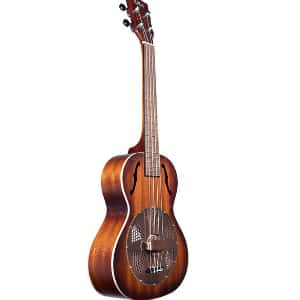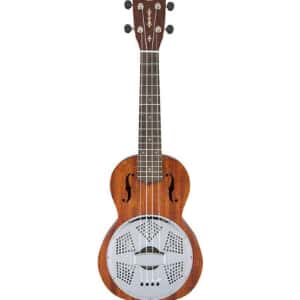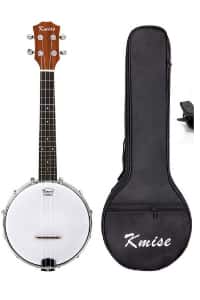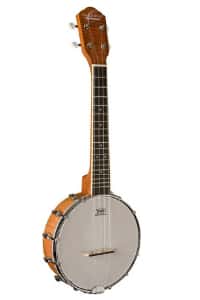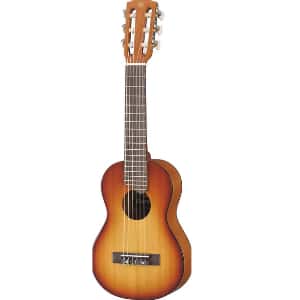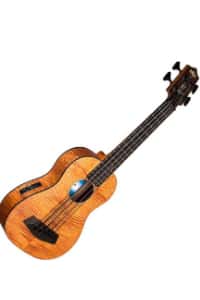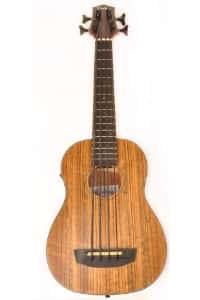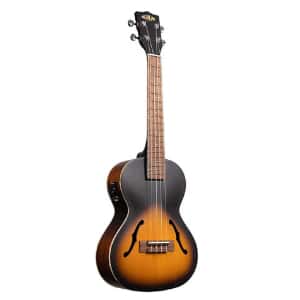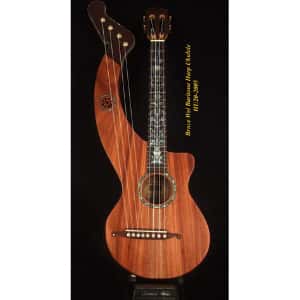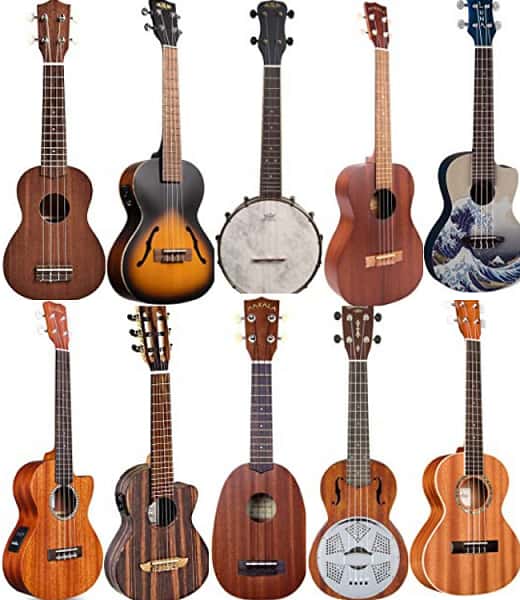
In this article, we’re going to mention the different types of ukuleles, including crossbreds, which are becoming more popular in the world of ukuleles. This guide will help you know about the different types of ukes briefly and buy the best ukulele for your needs.
Types of Ukuleles Vs. Ukulele Sizes
Most ukulele-type seekers are eager about the sizes of ukuleles. We will talk about different types/styles in this article, not different sizes. However, in brief, we will talk about the sizes here.
Our Quick Picks among the Different Types of Ukuleles
In a hurry, you don’t have much time to do research. We have found the three best beginner ukuleles, which are sold online for under $100.
All are concert or tenor ukes, and what we suggest for most beginner players. To get more, visit our ukulele review section.
| Product Name | Price |
|---|---|
| 1. Uke Tenor Size Bundle From Lohanu (LU-T) | Check Price |
| 2. Official Kala Learn to Play Uke Concert Starter Kit | Check Price |
| 3. Donner Professional Concert Ukulele | Check Price |
Standard Ukulele Sizes
Standard ukuleles come in four different sizes. These are soprano, concert, tenor, and baritone.
- Soprano: It is the smallest and most common size of the uke family. Due to its small and thin size, it is perfect for small-handed players and travel. Sometimes, players having large fingers worry that they will fall into trouble because of its close frets. However, we think you won’t have much of a problem if you don’t have too large fingers. It is 21” long, 12-15 frets, and its tuning method is the G-C-E-A. After all, it’s fun stuff, and it won’t cost you too much to buy.
- Concert: It is a few inches larger compared to the soprano. The concert gives a crisper sound because of its slightly larger size. Like the soprano, its tuning method (G-C-E-A) is also the same. For having more space between the frets, people with large fingers automatically choose it. Players can take more notes on the fretboard because the concert has more frets than the soprano.
- Tenor: The tenor is pretty larger than the soprano. For this, it produces a more enriched and fuller sound. Its tonal qualities are high, and it has the capability of reaching higher notes on the fretboard. Consequently, it has been a favorite choice for performers. The standard tuning (G-C-E-A) is used to tune.
- Baritone: The Baritone uke is the largest size in the uke family. It has low-pitch tuning: D-G-B-E. The tuning has some similarities with the other three sizes, but the baritone still has its own different sections. Due to its large size compared to others, it offers plenty of warmth and resonance. Despite being a fun instrument, it also may not be a suitable option for beginners because of its unconventional tuning.
Pineapple Ukulele
In 1927, Samuel Kamaka introduced the pineapple-shaped ukulele. The pineapple uke comes in round and oval shapes. Its structure comes from a large body.
Many music lovers consider its shape as a bit of newness, but it provides a much powerful and resonant sound than conventional-shaped ukuleles.
It has become more popular among the soprano and concert lovers, but not so much among the tenor and baritone lovers.
Are you searching for a pineapple ukulele? Visit our reviews of the best pineapple ukuleles.
Recommended Pineapple Ukulele
Electric Ukulele
The electric ukulele is available in two forms. One is a complete electric ukulele, and the other is an electro-acoustic uke.
The usual electric uke is the equivalent of its non-resonant body electric guitar and has a pickup to transfer the vibration signals to an amplifier.
The electro-acoustic uke contains the acoustic body of a traditional one with a pickup to gather the string vibrations and to dispatch an amp through a jack output.
The fully electric uke has not become very popular, just like the semi-acoustic version, which might be the reason for the cost and lack of flexibility.
To know more, check out the best electric ukulele reviews.
Recommended Acoustic-Electric Ukuleles
Cutaway Ukulele Type
A cutaway means that the right-hand shoulder of the ukulele is cut off for access to higher frets. They are pretty popular among the four main types and effortlessly available in ukuleles.
You can desire to get the hybrids by moving away from the standard ukes. In general, these are considered the crossbreeds of various instruments with ukuleles. With the development of technology over recent years, their production has become easy. To get a different sound or style to the music, hybrids are introduced, and their popularity is increasing day by day.
Recommended Cutaway Ukulele
Resonator Ukulele Type
A Regenerator refers to a smaller version of the Regenerator guitar, a popular Guitar choice for slide and blues players. Its other name is a Resonator ukulele or resonophonic ukulele.
You will be able to play it like any other ukulele and tune to a standard uke tuning (G-C-E-A). Its look and tone have made it different compared to others.
The Regenerator consists of a metal cone built into the body that allows you to produce a bright, loud, two-tone compared to standard ukuleles. Its journey began around the 1920s to provide more volume and projection for players.
Resonator Ukuleles come with a wooden body and a metal body. The metal version delivers brighter and higher sound. On the other hand, the wooden version gives a slightly warm and mellow sound.
Recommended Resonator Ukuleles
Banjo Ukulele (Banjolele)
It is a hybrid instrument of the ukulele and Banjo. In the 1920s, the banjo was first designed.
A banjo ukulele holds four strings, and you can tune it like a standard ukulele. It is another popular, unconventional ukulele type and is usually known as the banjolele. The nylon strings of the Banjo uke are similar to a standard ukulele.
Banjo offers a much louder and brighter sound than regular ukuleles. These are also less durable. It means that the notes die faster and are high quality.
It is pretty difficult to enjoy a warm, enriched, harp-like melody of an ideal uke in a banjo. The staccato tone of a banjolele is capable of making it more workable in specific rhythms and doable situations, but it might not do the work with more modern song music.
Someone can narrate the banjo’s tone as crisp or robust. On the other hand, others can describe it as harsh or tiny.
Recommended Banjo Ukuleles
You can check out More Banjo Ukuleles.
Guitalele (Guitar Ukulele)
A Guitalele is a musical instrument that has six strings. Most Guitaleles come in the size of a baritone body, which is the biggest among the four standard sizes. Guitaleles are also called guitar ukuleles, and in short, are named Guitaleles. You can tune a Guitalele like a guitar, but five and a half steps higher than the pitch. It is like playing the guitar with a fifth fret capo. Playing the Guitalele will be easy if you have any previous experience playing the guitar, and everything will become fine.
Another way to tune the Guitalele is that you can tune it just like a standard one with an additional two bass strings. The G-C-E-A is the standard uke tuning, and the A-D-G-C-E-A is a Guitalele’s tuning.
To know more, you can visit our best Guitalele reviews.
Recommended Guitaleles
Bass Ukulele Type
A bass is originally a bass guitar, which comes in the body of a baritone ukulele.
The bass ukulele tuning is equivalent to a standard bass: E-A-D-G. It is equal to the four strings at the bottom of a guitar.
Bass ukuleles contain a much shorter scale in comparison to a standard bass. This short scale implies that they require thick, rubberized strings to strike the low register of a bass. This combo of fatty Strings and short scale provides the bass a less string tension, so the Strings seem lazier than regular bass guitars.
The distance between the nut and saddle is regarded as the scale of the uke. This portion of the stringed area creates vibration when the uke is strummed.
In general, most bass ukes are made to play through an amp because the low string tension delivers acoustically very small amounts of volume.
Bass ukes produce a tone that gets warm and enriched, even though they are small in size. Sometimes, some players tend to compare a bus-sized sound to a full-size upright bass.
Looking for more bass? Go to the best bass ukulele.
Recommended Bass Ukes
Archtop Ukulele
An Archtop is adapted from an archtop guitar. You can play and tune it just like a standard one (G-C-E-A). The only difference is its appearance.
Jazz players prefer archtop guitars due to their enriched and mellow tone. However, the body of a smaller one is not, in fact, capable of translating these qualities. Many say that all archtop ukes sound more or less like a regular non-archtop uke.
Recommended Archtop Ukuleles
Harp Ukulele Type
The Harp assembles both components of a harp and unfretted strings (like a harp) with a bridge extension attached to a ukulele. It first emerged around the early 20th century and arrived at its popularity not too long after, but later has grown pale. Some have begun to research it once again, and perhaps, it might also get more popular in the next.
Recommended Harp Ukulele
Other types of Ukuleles
The purpose of this guide is to mention some popular types of ukuleles, but we can’t show them all. A quick Google image search reveals that there is no specific number for how many types of ukuleles are produced and sold around the world.
Of course, if you think some other types of ukuleles should be included in this list, let us know in the comments.
